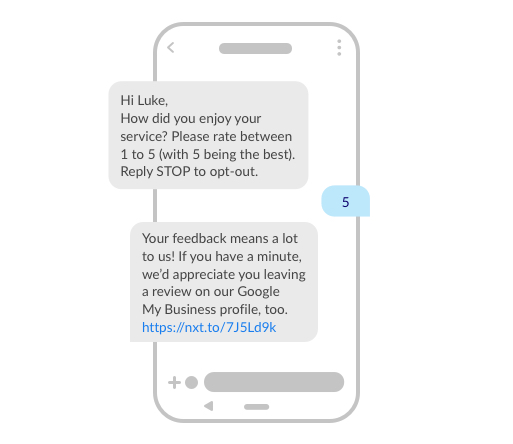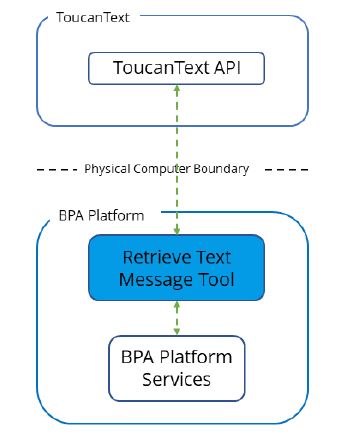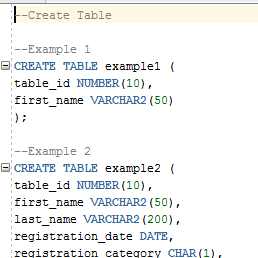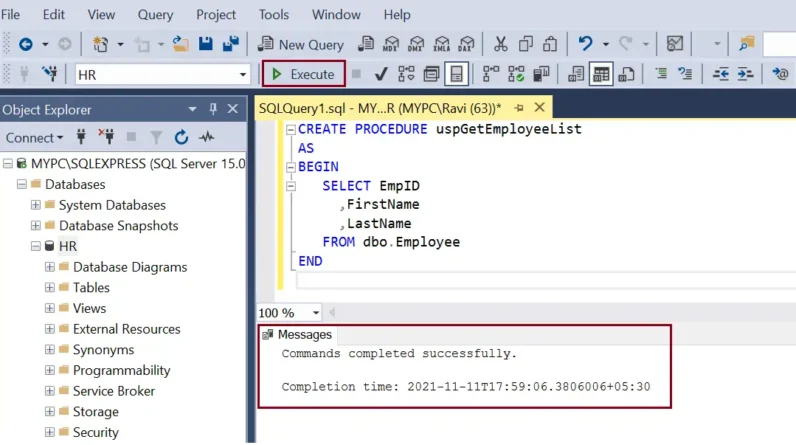
Have you ever wondered how your favorite apps and websites send you those automated messages? Whether it’s a confirmation email, a password reset notification, or a personalized recommendation, these messages are all generated automatically by a system. But how does it all work? In this beginner’s guide, we’ll dive into the world of system-generated messages and learn how you can create your own. So, if you’re curious to know more, keep reading!
In this article, we’ll explore the basics of creating system-generated messages. We’ll start by understanding what these messages are and why they are important in today’s digital world. Then, we’ll walk you through the step-by-step process of setting up your own system-generated messages, including choosing the right templates, customizing the content, and incorporating personalization techniques. By the end, you’ll have a solid understanding of how system-generated messages work and be equipped with the knowledge to implement them in your own projects. So, if you’re ready to level up your communication game and impress your users or customers, let’s get started!
Table of Contents
A Beginner’s Guide to Creating System Generated Messages

Understanding System Generated Messages
System generated messages are automatic notifications or alerts that are generated by software or applications to communicate with users. These messages are triggered in response to specific events or actions, such as account creation, password resets, or error notifications. They play a crucial role in providing information, instructions, and feedback to users.
What are system generated messages?
System generated messages are pre-drafted templates that are designed to be sent automatically. They eliminate the need for manual communication and ensure consistency in the messaging process. These messages are often delivered via email, SMS, or through notifications within an application.
Importance of system generated messages
In today’s digital world, system generated messages are an essential part of user experience. They serve as vital communication tools between the software and the user, making it imperative that they are well-designed and easy to understand. Effective system generated messages play a pivotal role in improving user satisfaction, reducing support requests, and enhancing overall usability.
Types of system generated messages
System generated messages can be broadly classified into different categories based on their purpose and content. Some common types include:
-
Account creation: These messages are sent when a user successfully creates an account, welcoming them and providing any necessary instructions.
-
Password resets: Messages sent to users who have requested to reset their passwords, providing a temporary password or a link to set a new one.
-
Error notifications: These messages inform users about errors or issues encountered while using the application or software. They offer guidance on how to resolve the problem or contact support.
-
Transactional notifications: Messages that provide updates on transactions, such as payment receipts, order confirmations, or shipping notifications.
-
Subscription or membership updates: These messages inform users about changes in their subscription plans, renewal reminders, or membership updates.
-
Privacy and security notifications: Messages that notify users about any changes in privacy policies, terms of service, or security-related issues.
Key Components of System Generated Messages
To create effective system generated messages, it is important to understand the key components and best practices for structuring and formatting these messages.
Message structure and formatting
System generated messages should have a clear and organized structure. They typically include a greeting or salutation, the main message content, and a closing remark or call to action. It is crucial to keep the message concise, avoiding unnecessary information or lengthy paragraphs. Bullet points or subheadings can be used to break down complex instructions or information into easily digestible chunks.
Variables and placeholders
System generated messages often include dynamic content that needs to be customized for each user or specific scenario. Variables and placeholders can be used to dynamically insert user-specific information such as names, account details, or transactional data. This personalization makes the message feel more relevant and tailored to the individual user.
Error handling and fallback messages
Error handling is an essential aspect of system generated messages. In case a message fails to deliver or an error is encountered during its generation, fallback messages can be used as a backup. These fallback messages should provide a basic level of information and notify the user that there was an issue with the original message.
Designing Effective System Generated Messages
Creating well-crafted system generated messages requires careful attention to the overall message design, tone, and consistency.
Keeping it concise and clear
System generated messages should be concise, focusing on providing relevant information in a clear and straightforward manner. Avoid excessive use of technical jargon or complex language that might confuse the user. Use simple and easily understandable language, ensuring that the message is scannable and can be quickly comprehended.
Personalizing messages
Personalization is key to delivering effective system generated messages. Whenever possible, include user-specific information to make the message feel more personal and relevant. Incorporate variables and placeholders to dynamically populate information, such as the user’s name or transaction details. This personal touch enhances the user experience and strengthens the connection between the user and the software.
Consistency in tone and style
Maintaining consistency in the tone and style of the system generated messages is essential for establishing your brand identity and ensuring a cohesive user experience. Define a clear and consistent tone that aligns with your brand’s personality and values. Whether it’s a professional and formal tone or a friendly and casual one, make sure it remains consistent across all system generated messages.
Implementing System Generated Messages
Once the system generated messages are designed, it’s crucial to integrate them seamlessly into the software or application.
Integration with software and applications
System generated messages need to be properly integrated into the software or application to ensure they are triggered and sent at the appropriate times. This integration can be achieved by using event-based triggers or hooks that are built within the software.
Automating message generation
Automation is key to efficiently sending system generated messages. By automating the process, messages can be triggered and sent instantly, saving time and effort. Automation also reduces the chances of errors or inconsistencies in message delivery.
Testing and optimization
Before implementing system generated messages, it is important to thoroughly test them to ensure they are functioning as intended. Testing should include verifying the content, formatting, and personalization variables. Additionally, it is important to continually monitor and optimize the messages based on user feedback and analytics.

Best Practices for System Generated Messages
To ensure system generated messages are effective and well-received, several best practices should be followed.
Using appropriate language and tone
The language and tone of system generated messages should be appropriate for the target audience and the purpose of the message. Avoid using technical jargon unless it is necessary, and ensure the language is accessible and understandable by a wide range of users.
Providing informative error messages
Error messages should be informative and provide clear instructions on how to resolve the issue. Avoid generic error messages that do not provide any actionable information. Instead, pinpoint the specific problem and suggest steps to rectify the situation.
Considering accessibility and localization
When designing system generated messages, it is important to consider accessibility guidelines and ensure that the messages can be easily understood by users with different abilities. Additionally, if the software or application is intended for use in multiple regions or languages, it is crucial to account for localization and provide messages that are culturally sensitive and appropriately translated.
Common Challenges in Creating System Generated Messages
While system generated messages offer many benefits, there are also challenges that come with their creation and implementation.
Avoiding spam filters
System generated messages often need to pass through a user’s email or messaging service’s spam filters. It is important to structure and format the messages in a way that avoids triggering these filters. This includes avoiding excessive use of capitalized letters, special characters, or keywords that are commonly associated with spam messages.
Dealing with message delivery failures
There may be instances where system generated messages fail to deliver due to technical issues or incorrect user information. It is important to have mechanisms in place to handle failed message deliveries and provide users with alternative means of receiving the necessary information.
Handling sensitive or confidential information
Certain system generated messages may contain sensitive or confidential information, such as account credentials or personal data. It is crucial to handle such information with care and ensure the messages are sent securely, following industry best practices for data protection.

Security and Privacy Considerations
The security and privacy of user data should be a top priority when designing and implementing system generated messages.
Protecting user data
When collecting and storing user data, it is important to follow data protection regulations and industry best practices. Implement secure encryption methods and consider data minimization techniques to only collect and store the necessary information needed for system generated messages.
Securing message transmission
System generated messages often contain sensitive information that should be transmitted securely. Utilize secure communication protocols, such as SSL/TLS, to encrypt the messages during transmission. Additionally, ensure that the message provider you choose follows strict security standards to protect the messages and user data.
Complying with privacy regulations
When handling user data, it is essential to comply with privacy regulations such as the General Data Protection Regulation (GDPR) or the California Consumer Privacy Act (CCPA). Understand the requirements and obligations imposed by these regulations and ensure that the collection, storage, and use of user data for system generated messages are in compliance.
Measuring Success of System Generated Messages
To evaluate the effectiveness of system generated messages, it is important to define relevant metrics and continuously measure and analyze their performance.
Defining relevant metrics
The metrics used to measure the success of system generated messages will depend on the specific goals and objectives of the software or application. Some common metrics include open rates, click-through rates, conversion rates, and user feedback or satisfaction ratings.
Monitoring and analyzing message performance
Regularly monitoring and analyzing the performance of system generated messages is crucial to identifying areas for improvement. Use analytics tools to track metrics, identify trends, and gain insights into user behavior and engagement.
Iterating and improving messages
Based on the analysis of message performance, continuously iterate and improve the system generated messages. Test different variations of messages, personalize further, or adjust the tone to optimize their effectiveness. User feedback and suggestions can also provide valuable insights for improvement.

Examples of Well-Crafted System Generated Messages
To illustrate the concepts discussed, here are some examples of well-crafted system generated messages:
Order confirmation emails
Subject: Your Order #123456 Has Been Confirmed! Hello [User],
Thank you for your order! We are delighted to confirm that your order #[Order Number] has been successfully placed. It will be shipped to the address provided, [Shipping Address], within [Estimated Delivery Time]. You will receive a separate email with the tracking details once your package is dispatched.
If you have any questions or need further assistance, feel free to reach out to our dedicated support team at [Contact Email].
Best regards, The [Company Name] Team
Password reset notifications
Subject: Reset Your Password for [Website Name] Hello [User],
We have received a request to reset your password for your [Website Name] account. To proceed with the password reset, please click the link below:
[Reset Password Link]
If you did not initiate this request, no action is required. However, if you suspect any unauthorized activity, we recommend changing your password immediately. Should you need any assistance, please contact our support team at [Contact Email].
Best regards, The [Company Name] Team
Error messages in web forms
Oops! Something went wrong. We apologize for the inconvenience, but it seems that an error occurred while processing your request. Our team has been notified and is working diligently to resolve the issue.
Meanwhile, please try again later or contact our support team at [Contact Email] for assistance.
Thank you for your patience. The [Company Name] Team
Conclusion
Effective system generated messages are an integral part of providing a seamless and user-friendly experience within software and applications. By understanding their importance, key components, and best practices for creating and implementing these messages, you can enhance user satisfaction and streamline communication. Remember to continuously measure and optimize the messages to align with user expectations and improve overall user experience. So go ahead, create impactful system generated messages and watch as they enhance your users’ interactions with your software or application.








